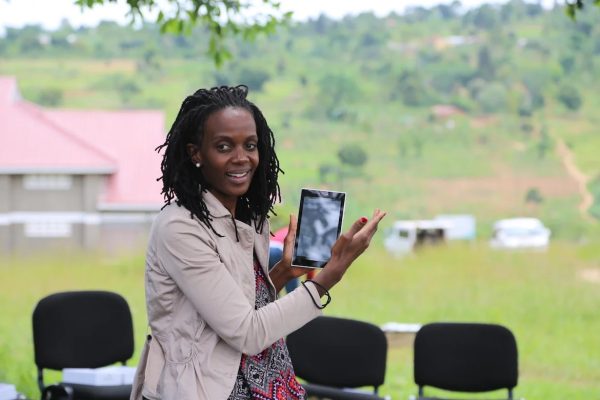Georgetown University’s Science, Technology and International Affairs (STIA) program hosted the Loewy Lecture in Technology and International Affairs on Jan. 25, featuring a presentation about the impact of Earth observation technology on sustainable farming in Africa.
Catherine Nakalembe, assistant professor of geographical sciences at the University of Maryland, spoke at the event about her experience as director of the NASA Harvest Africa program, an initiative that uses satellite data and artificial intelligence to support agriculture in Africa.
Nakalembe, a seasoned practitioner in applying satellite data to address agricultural challenges, said remote sensing — or the science of obtaining information about objects or areas from aircraft or satellites — and machine learning are creating new avenues for improving crop yields in climate-vulnerable regions and relaying these findings to farmers.
“We are translating satellite data into actionable farming strategies, but there is a huge gap in terms of communication,” Nakalembe said at the event.
Joanna Lewis, director of the STIA program, said at the event that the annual Loewy Lecture has fostered significant discussions about the intersection of technological innovation and international affairs since then-Senator Joe Biden gave the inaugural lecture in 2000.
“The Loewy Lecture has consistently attracted luminaries across various fields, reflecting on topics at the forefront of technological innovation and international affairs,” Lewis said at the event.
Nakalembe discussed the importance of international collaborations in the agricultural sector, such as the Global Agriculture Monitoring System (GLAMS), a worldwide network for tracking and analyzing agricultural trends using satellite data.
“This Global Agriculture Monitoring System was built at the University of Maryland, based on a satellite by NASA called MODIS,” Nalkalembe said. “It enables agriculture monitoring and is essential for looking at changes over time.”

Nakalembe said that in Uganda, among other African countries, she has effectively used satellite technology to enhance agricultural practices in farming communities.
“Using the GLAMS system, we were able to design a trigger mechanism in Uganda,” Nakalembe said. “This allowed for decision-making on whether a region would be severely impacted by drought and needed planning ahead for income-generating work so families could provide for themselves.”
Nakalembe said that the use of datasets for critical decision-making in farming is a major practical application of satellite data in agriculture.
“These datasets help answer crucial questions like whether we’re below or above production needs and how to manage surpluses or deficits,” Nakalembe said.
According to Nakalembe, the NASA Harvest Africa program supports informational technologies that not only answer such questions but specifically work to empower local farmers and policymakers in an environmentally conscious manner.
“Technology must be embraced by those it intends to serve, tailored to their needs, and harmonious with their ecological and social landscapes,” Nakalembe said.
Addressing the issue of resilience in agriculture, Nakalembe said farmers often face decision-making dilemmas in areas prone to extreme weather events.
“In regions like Mozambique or Malawi, frequently hit by cyclones, farmers grapple with questions like when to plant or whether to plant at all,” Nakalembe said. “For instance, if there’s an impending category four storm, the best decision might be not to invest in planting in fields likely to be destroyed.”
Mark Giordano, professor of geography and Vice Dean for Undergraduate Affairs in the School of Foreign Service, shared the value of Nakalembe’s words for the audience at Georgetown.
“Her work, especially in the field of Earth observation, is not just academically significant — it also holds immense practical value for sustainable agriculture in regions like Africa,” Giordano told The Hoya. “It’s exactly the kind of interdisciplinary and impactful research we encourage and celebrate here at Georgetown.”
Jennifer Ghallan (SFS ’24), a student in the STIA program who attended the lecture, said she appreciated the clarity with which Nakalembe conveyed the complexities of harnessing technology to solve agricultural challenges.
“The lecture brought to life the critical role of technology in solving real-world problems and left us considering the broader implications for global food systems,” Ghallan told The Hoya.
In her closing remarks, Nakalembe said the continued pursuit of technological solutions grounded in realities that aim to help will bring a more food-secure world within reach.
“Our work is far from done,” Nakalembe said. “But with each successful harvest informed by our data, we move one step closer to a world where hunger is not a daily reality.”








